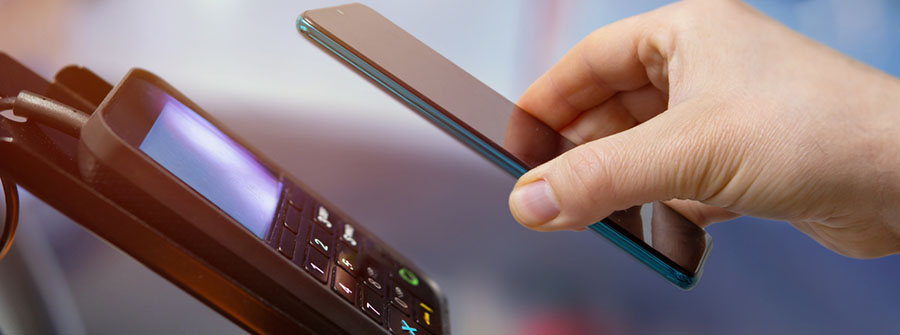7 Pay-at-the-Table Questions Restaurant Owners Shouldn’t Miss

This blog post was written by Mark Bunney, Director of Strategic Accounts & Go to Market at Ingenico Group, North America.
With EMV and mobile wallets, the payment experience across different U.S. industries is starting to change. Many restaurants are addressing this evolution by adopting Pay-at-the-Table payment solutions. Although most full-service restaurants already take guest payments at the table, typically the server takes the guest’s payment card away to a workstation to process the payment. However, with Pay-at-the-Table, servers bring the check and a wireless or mobile point of sale solution to the diner’s table to process the payment.
This method is very common outside the U.S., especially in Canada and Europe. Diners use the wireless terminal or mobile point of sale (mPOS) device to pay with their preferred method of electronic payment, including EMV chip cards and mobile wallets such as Apple Pay and Google Pay.
By bringing payment to the consumer at the point of service, the chances of fraud are reduced due to the fact that the payment card never leaves the guest’s possession. This added security, along with improved service quality and efficiency, are the key reasons why many U.S. restaurants are now beginning to follow the Pay-at-the-Table model.
When we talk with our customers who are considering Pay-at-the-Table, we receive many questions regarding this new payment solution. Below is a list of the most frequently asked questions along with the answers.
1. Why do you think the US has lagged in Pay-at-the-Table adoption?
The U.S. is one of the last countries to adopt EMV. Prior to the EMV liability shift in October 2015, restaurants did not have a compelling reason to implement a Pay-at-the-Table solution. Now, with processors issuing chargebacks to merchants who are not EMV-compliant, restaurants must adapt to the new standards or incur costly fees.
New technology has also brought about a change in the way consumers want to pay. With the introduction of mobile wallets, including Apple Pay and Google Pay, servers aren’t able to take a customer’s phone back to a POS system to finalize payment. Instead, they need to bring a payment device to the customer so they can tap their phone and pay. This is a crucial step as mobile wallets continue to gain in popularity and more customers expect them to be supported.
2. How does the transmission rate of Bluetooth and Wi-Fi affect the time to complete EMV transactions?
Consider the following metrics to understand the scope of this impact:
- The transmission rate of the industrial Bluetooth used by Ingenico is up to 1Mbps (Megabits per second)
- Wi-Fi transmission rate is up to 1.5Mbps (as a reference, 1Mbps is 125,000 bytes).
Considering the average transaction size is less than 256 bytes, the transmission time on both Wi-Fi and Bluetooth-enabled terminals should not be impacted by any type of transaction, including EMV.
3. Since Pay-at-the-Table can be either Wi-Fi or Bluetooth-enabled, will the merchant need EMV software on its point of sale devices?
If the merchant decides to support EMV, irrespective its payment acceptance solution (standalone, fully-integrated or semi-integrated), it must have a certified EMV chip reader and software to able to securely accept payments on either Bluetooth or Wi-Fi-enabled devices.
4. How many devices would an average-sized restaurant need to avoid staff having to wait for a terminal to be available?
There are many factors to consider, including the type of restaurant (fine dining, bar, etc.). Other factors to consider are the number of tables used in your current location and the maximum number of credit and debit card transactions performed on the busiest day.
For up to 10 tables on a single floor, a reasonable estimate is one terminal and one charging base. For 11 to 30 tables, you probably need two terminals and two charging base. For more than 30 tables, you most likely need at least three terminals and three charging bases.
5. In a restaurant environment, how does splitting checks work with Pay-at-the-Table?
Today, servers can split up the total bill and provide separate checks to the table, then collect each individual’s card when a table is ready to close out, then go to back to the POS station, and finally close out each receipt individually. However, there are two options for splitting checks when using a Pay-at-the-Table solution:
- SPLIT AT POS
With a Pay-at-the-Table solution, the server can first split a single check into multiple checks using a POS terminal. The server can then select each individual’s check on the payment device, hand the device over to the customer to swipe/tap/insert a card, add a tip, and confirm the total bill. The device would then be handed back to the server to print a receipt so the customer can sign it if required. In instances where PIN is required for authentication, customers need to enter their PIN on the payment device. Then, the server would pull up the next check and hand the terminal to the next person at the table. The server would continue to follow this process until all individuals at the table pay for their bill.
- SPLIT AT TABLE
An alternative to the split at POS method is to take a single check and split it amongst different individuals while at the table. In this scenario, the device prompts for a split amount and individual transactions are run for each customer until the check is fully paid.
6. How does tipping work on a Pay-at-the-Table solution?
Today, when paying a bill at a restaurant, the server takes the customer’s credit card to the POS system and returns with the receipt, which includes a line for tip. The customer adds the desired tip amount and signs the receipt. The server then takes the receipt back to the workstation where the tip is entered in to the system. With a Pay-at-the-Table solution, tipping can work in two ways:
- TIP ALLOWANCE
Tip allowance works in a similar way that tipping works today. In the case of an EMV transaction, the wireless terminal or mPOS device authorizes the transaction amount (not including the tip) and prints out the receipt, which includes a tip line for the customer to use and sign (if required). Once signed, the server then adjusts the tip amount while carrying out the final bill settlement.
- TIP AT THE TIME OF SALE
Tip at the time of the sale is used in many countries outside the U.S. With this method, the customer adds the tip amount to the total bill right on the wireless terminal or mPOS device before paying. By allowing the customer to do this on the terminal, this solution incorporates the same benefits of tip adjustment mentioned above. It also improves server efficiency by eliminating the need to adjust the tip later, which restaurants report being a time-consuming task. This method also ensures that the server can’t alter the tip amount entered by the customer, which further reduces fraud. Many new payment devices also offer pre-set tipping options typically ranging from 18% to 25%. This allows customers to easily select the tip amount they see fit without any calculations. This speeds up the payment process and can also increase tip amounts for the servers.
7. Do you expect that all chip cards will eventually require a PIN number, and, if so, how will this work with restaurants without a Pay-at-the-Table solution?
Currently, if the terminal supports PIN, debit card transactions already require a PIN. We do expect that many non-debit EMV cards will eventually require a PIN. Chip & signature was used as a way to easily migrate EMV into the U.S. Once EMV cards require a PIN number, restaurant owners will be forced to adopt a Pay-at-the-Table solution, as the customer will need to be able to enter a PIN on the terminal at the time of the transaction.
Still have questions on Pay-at-the-Table? Submit your questions in the comments below or via our “Ask an Expert” page.
This article originally appeared here: 7 Pay-at-the-Table Questions Restaurant Owners Shouldn’t Miss

Connect with Us
With business activities in 50 markets and 150+ currencies around the world, EVO is among the largest fully integrated merchant acquirers and payment processors in the world.
Related News

Finer Frames Streamlines Payments with EVO
Since 1999, Finer Frames in Eagle, Idaho, has provided innovative design, museum framing, restoration, art installation, and a range of…

4 Things A Field Services Business Should Look for in a Payment Processing Partner
Managing a field services business, such as a lawn care or plumbing business, is hard work. The last thing you…

Mobile Payments: Accepting Payments Their Way
The right devices and peripherals make all the difference. There is no doubt that customer expectations for quick and efficient…



